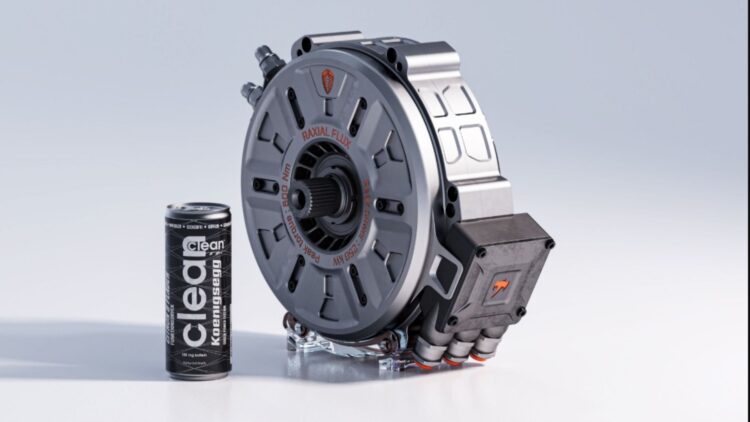Only Sweden can make ring-shaped engines, and that is clear. The era of electric vehicle (EV) redefinition is known by one name- Koenigsegg. The Swedish automaker has long become known for creating hypercars that reimagine boundaries in terms of what is possible. Koenigsegg works to create motors that are small yet powerful, reasserting what electric propulsion is all about. It’s time to introduce Quark, which is a rather nifty and compact, ring-shaped electric motor that produces a staggering 335 horsepower and 443 lb-ft of torque while weighing just about 63 pounds. While the Quark electric motor addresses the impossible, Koenigsegg is willing to solve any challenges to make Quark fully possible.
Providing insight into the Quark powerhouse hybrid motor
This hybrid motor design is one that combines axial-flux and radial architectures ensuring high torque and high-power density previously unfamiliar in the EV world. Quark is one EV that can focus on both high power and high torque, giving Koenigsegg the edge it needs to endorse the best of both. Quark is as such a leader in the motor industry in terms of its torque-to-power-to-weight ratio.
Despite Quark’s peak power numbers being available for short 20-second bursts, a core characteristic of high-performance EV motors is that they still offer solid 134 hp and 184 lb-ft of torque continuously. This is fairly reasonable when paired with the Gemera’s innovative hybrid powertrain, which contains three Quark motors and a 600-hp three-cylinder internal combustion engine. This driving experience is said to launch you to 400 km/h (248.5 mph) without power fading or the feel and need for gear changes.
Admired for its versatility, Quark is revolutionary
The numbers do make Quark revolutionary, however, the way in which Koenigsegg achieved these numbers is something else. The motor makes use of Aircore technology, a Koenigsegg design that incorporates hollow carbon fiber for the rotor and aerospace-grade steels for structural integrity. The overall construction means that Quark can stay featherweight whilst being strong, a necessary feature of performance is measured in milliseconds and grams.
What is achieved is a motor’s low RPM and high torque output that makes it a viable option for cars as well as aircraft, VTOL (vertical takeoff and landing) applications, and marine applications. CEO, Christian von Koenigsegg, has mentioned that since Quark delivers usable torque from near-zero RPM, it eliminates the need for a reduction gearbox, streamlining powertrains and cutting weight.
The design of Koenigsegg’s motor is focused on keeping systems light and compact without sacrificing performance. At a time when the aerospace sector is seeking lightweight yet high-performance propulsion systems, Quark’s timing is on point. From the circle engine, the time is now for the ring-shaped engine.
Introduction of the Koenigsegg Terrier powertrain system
While we would expect Koenigsegg to stop at the Quark motor, it seems to be introducing its own EV drive unit called the Terrier. Terrier is formed by pairing two Quark motors with a compact inverter and planetary gearsets. What results is an integrated drive module that outputs 670 hp and 811 lb-ft of torque, weighs just 187 pounds, and features torque vectoring across the axle, making it best for high-performance operations.
Another interesting feature is that the Terrier unit can be directly bolted to a car’s monocoque, making it extremely modular for manufacturing design.
Quark is a statement in the right direction in terms of showing tiny packages can have massive impacts. Sweden surely will be turning the EV industry into one that has been revolutionized with ring-shaped, featherweight engines offering maximum performance whilst still being a versatile and rather sustainable option.
The future of EVs could very well be created by Swedish automaker- Koenigsegg. However, if this country wiped out 100% of cars including EVs so could the future of EVs really be stipulated by Koenigsegg.


